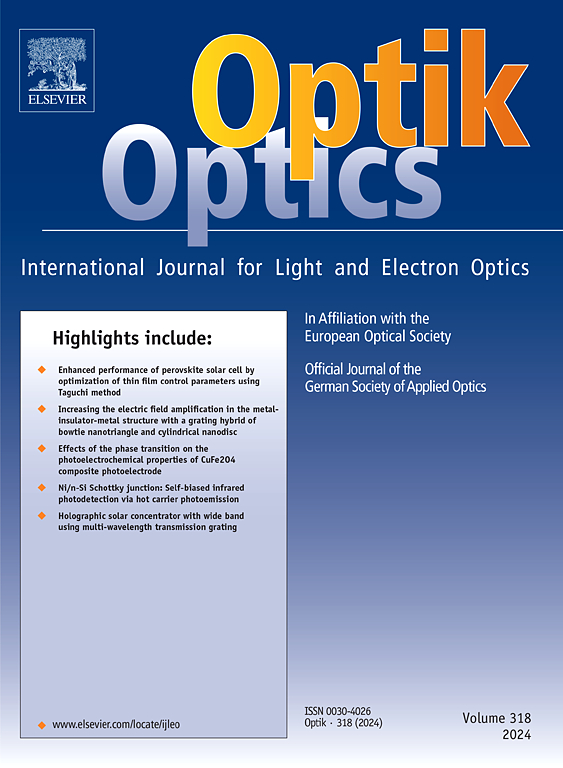BM3D optical image denoising algorithm based on SVD noise estimation
IF 3.1
3区 物理与天体物理
Q2 Engineering
引用次数: 0
Abstract
Image denoising represents a crucial technique for recovering visual information, whereby irrelevant noise is effectively suppressed, thus enhancing the quality and recognition of the image. It has been demonstrated that existing image-denoising algorithms can achieve considerable denoising effects when the noise intensity is known. However, natural images are affected by multiple unknown noise sources during the generation and transmission processes. The unpredictable nature of the noise intensity often results in unsatisfactory image-denoising effects. Therefore, this paper proposes a block-matching three-dimensional cooperative filtering (BM3D) optical image denoising algorithm based on singular value decomposition (SVD) noise estimation. First, the optical image is decomposed by SVD. Then, using the tail of singular values to estimate the noise variance of the optical image. Subsequently, the noise estimated value is employed as prior information for BM3D, facilitating the denoising analysis of the optical image. The final step is to use the PSNR to evaluate the algorithm's effectiveness. Experimental results show that compared with the classical image denoising algorithm, the denoising effect of the algorithm in this paper can better preserve image details, reduce noise residue, and perform better in terms of visual effects and PSNR.
基于SVD噪声估计的BM3D光学图像去噪算法
图像去噪是恢复视觉信息的一项关键技术,它有效地抑制了无关噪声,从而提高了图像的质量和识别能力。研究表明,在噪声强度已知的情况下,现有的图像去噪算法可以取得较好的去噪效果。然而,自然图像在产生和传输过程中会受到多个未知噪声源的影响。噪声强度的不可预测性往往导致图像去噪效果不理想。为此,本文提出了一种基于奇异值分解(SVD)噪声估计的块匹配三维协同滤波(BM3D)光学图像去噪算法。首先,对光学图像进行奇异值分解。然后,利用奇异值尾部估计光学图像的噪声方差。随后,将噪声估计值作为BM3D的先验信息,便于对光学图像进行去噪分析。最后一步是使用PSNR来评估算法的有效性。实验结果表明,与经典图像去噪算法相比,本文算法的去噪效果能更好地保留图像细节,减少噪声残留,在视觉效果和PSNR方面表现更好。
本文章由计算机程序翻译,如有差异,请以英文原文为准。
求助全文
约1分钟内获得全文
求助全文
来源期刊

Optik
物理-光学
CiteScore
6.90
自引率
12.90%
发文量
1471
审稿时长
46 days
期刊介绍:
Optik publishes articles on all subjects related to light and electron optics and offers a survey on the state of research and technical development within the following fields:
Optics:
-Optics design, geometrical and beam optics, wave optics-
Optical and micro-optical components, diffractive optics, devices and systems-
Photoelectric and optoelectronic devices-
Optical properties of materials, nonlinear optics, wave propagation and transmission in homogeneous and inhomogeneous materials-
Information optics, image formation and processing, holographic techniques, microscopes and spectrometer techniques, and image analysis-
Optical testing and measuring techniques-
Optical communication and computing-
Physiological optics-
As well as other related topics.
 求助内容:
求助内容: 应助结果提醒方式:
应助结果提醒方式:


